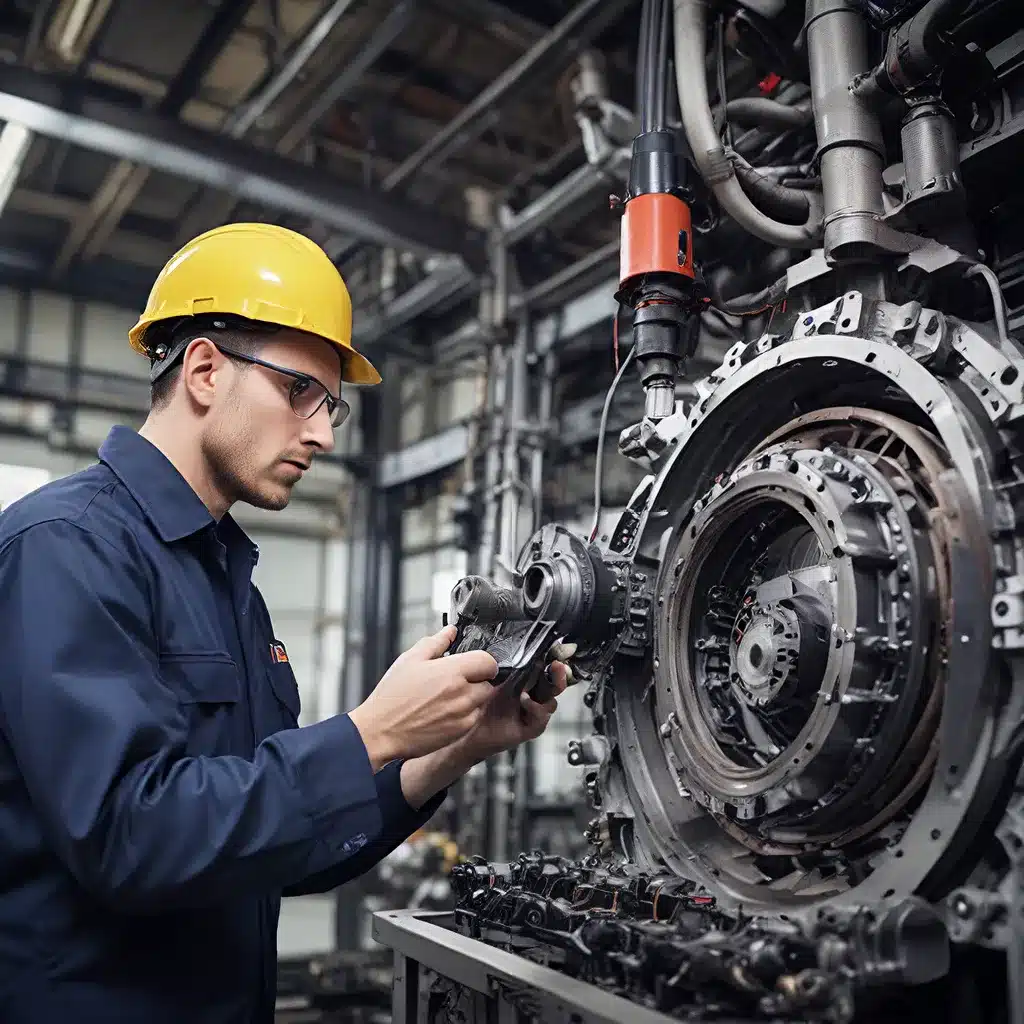
Unlocking the Power of Sensor Networks for Predictive Maintenance
In today’s dynamic business landscape, organizations across industries are facing increasing pressure to maximize the performance and reliability of their critical assets. From manufacturing plants to energy grids, the ability to anticipate and prevent equipment failures has become a crucial competitive advantage. Sensor-driven predictive maintenance is emerging as a transformative solution, harnessing the power of sensor networks, IoT, and advanced analytics to optimize asset performance and minimize unplanned downtime.
At the heart of this revolution is the integration of sensor data with sophisticated predictive maintenance models. By continuously monitoring the operational parameters and health indicators of assets, sensor networks provide a real-time, granular view of asset performance. This wealth of data, when combined with machine learning and artificial intelligence (AI) algorithms, enables organizations to develop predictive maintenance strategies that accurately forecast asset failures and proactively schedule maintenance interventions.
Leveraging IoT and Data Analytics for Smarter Maintenance
IoT technologies play a pivotal role in enabling sensor-driven predictive maintenance. The proliferation of affordable, internet-connected sensors has made it possible to instrument a vast array of assets, from industrial machinery to transportation infrastructure. These sensors continuously collect a wide range of data, including vibration, temperature, pressure, and energy consumption, providing a comprehensive view of asset health and performance.
IBM Maximo Predict, for example, unifies disparate operational data from these sensors and other sources, such as asset records and work history, into analytics-driven predictive maintenance models. By leveraging machine learning and AI, the platform helps reliability engineers and maintenance managers predict failures and optimize maintenance planning to improve asset reliability.
Data analytics play a crucial role in transforming raw sensor data into actionable insights. Advanced algorithms can identify patterns, correlations, and anomalies in the data, enabling organizations to detect early signs of asset degradation and take proactive measures to prevent failures. Condition-based monitoring, which uses sensor data to assess the real-time health of assets, allows for more targeted and efficient maintenance, reducing unnecessary repairs and extending asset life.
Improving Asset Reliability and Operational Efficiency
The adoption of sensor-driven predictive maintenance offers a range of tangible benefits for organizations, including improved asset reliability, enhanced operational efficiency, and reduced maintenance costs.
Increased Asset Availability: By anticipating and preventing equipment failures, sensor-driven predictive maintenance helps organizations maximize the uptime and availability of their critical assets. This translates into greater productivity, reduced disruptions, and improved customer satisfaction.
Optimized Maintenance Strategies: Predictive maintenance models, powered by sensor data and advanced analytics, enable organizations to transition from reactive, time-based maintenance to proactive, condition-based maintenance. This approach helps optimize maintenance planning, prioritize repairs, and reduce unnecessary interventions, leading to significant cost savings.
Extended Asset Life: By monitoring asset health and identifying issues early, organizations can implement targeted maintenance actions to mitigate the root causes of degradation. This helps extend the useful life of assets, deferring the need for costly replacements and optimizing long-term investment strategies.
Reduced Maintenance Costs: The combination of improved asset availability, optimized maintenance strategies, and extended asset life results in substantial reductions in maintenance-related expenses, including labor, parts, and unplanned downtime.
Addressing the Challenges of Sensor Network Design and Security
While the benefits of sensor-driven predictive maintenance are clear, organizations must navigate a range of technical and operational challenges to successfully implement these solutions.
Network Topology and Connectivity: Designing an efficient and resilient sensor network requires careful consideration of factors such as network topology, communication protocols, and power management. Deploying a mix of wired and wireless sensors, each with their own strengths and limitations, can be a complex undertaking that requires expert planning and deployment.
| Network Topology | Advantages | Disadvantages |
|---|---|---|
| Star | Simple, centralized control, lower power consumption | Limited scalability, single point of failure |
| Mesh | Scalable, self-healing, improved reliability | Increased complexity, higher power consumption |
| Hybrid | Combines advantages of star and mesh, improved flexibility | Increased design complexity |
Cybersecurity and Data Privacy: The proliferation of internet-connected sensors in sensor networks introduces significant cybersecurity risks, as these devices can be vulnerable to cyber attacks and data breaches. Implementing robust security measures, such as encryption, authentication, and access control, is crucial to protect sensitive operational data and prevent unauthorized access.
Energy Management and Sustainability: Powering a large-scale sensor network can be a significant challenge, particularly in remote or hard-to-reach locations. Adopting energy-efficient sensor designs, leveraging renewable energy sources, and implementing power management strategies are essential to ensure the long-term sustainability and viability of sensor-driven predictive maintenance solutions.
Unlocking the Future of Asset Management with Sensor-Driven Predictive Maintenance
As the IoT and data analytics continue to advance, sensor-driven predictive maintenance is poised to revolutionize the way organizations manage their critical assets. By harnessing the power of sensor networks, advanced algorithms, and artificial intelligence, organizations can gain unprecedented visibility into asset health, optimize maintenance strategies, and drive sustainable, long-term performance improvements.
Sensor-networks.org is at the forefront of this transformative technology, providing a wealth of resources and expertise to help organizations navigate the complexities of sensor network design, IoT applications, and predictive maintenance strategies. Whether you’re an operations leader, a reliability engineer, or an IoT enthusiast, exploring the capabilities of sensor-driven predictive maintenance can unlock new possibilities for optimizing asset performance and driving business success.